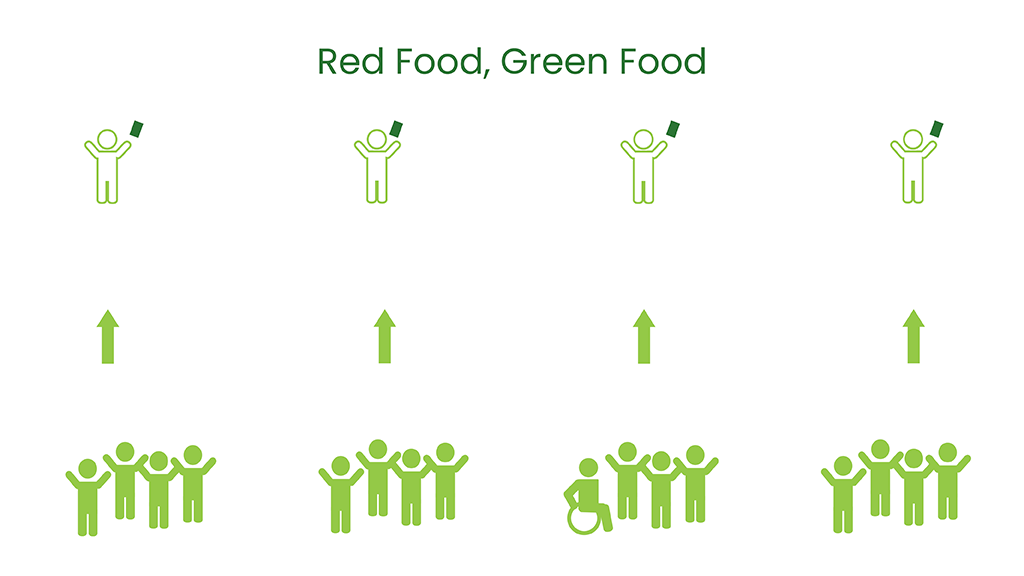Red Food, Green Food
Play a modified game of Red Light, Green Light (Red Food, Green Food) to learn about nutritious food choices.

Game
Play a modified game of Red Light, Green Light (Red Food, Green Food) to learn about nutritious food choices.

Nutritious food choices are your body’s best fuel to go, grow, and know!
Say: Show your choice for each “Would you rather?” question.
Food is your body’s fuel! The more nutritious your food choices, the better your energy to move and think. You can think of a stoplight to help you make nutritious food choices.
Eat More: Green-light foods are best! They have the most nutrition for energy and growth and can be eaten anytime. Green-light foods are great fuel for your body and brain, so eat them often! Examples: fruits, vegetables, whole grains, low-fat milk, and lean meat.
Eat Some: Yellow-light foods do not keep you fueled up the way green-light foods do. They have more fat, added sugar, and/or calories than green-light foods. Eat yellow-light foods sometimes, but not for every meal. Examples: low-fat ice cream, pasta, fruit juice, fruits in syrup, cheese sauce, peanut butter, and white rice.
Eat Less: Red-light foods have the lowest nutritional value. Stop and think about your choice and eat the red-light foods least often. Examples: chips, candy, fried foods, cakes, donuts, and soda.
The number one thing you need to know is that green-light foods give you the most nutrition! There are no “good” foods or “bad” foods, but eating green-light foods is always a fit choice for your body.
Today we are going to focus on identifying green-light foods and red-light foods while we play a game. This will help you know more about making nutritious food choices.

5. If time allows, rotate groups and repeat levels 2 and 3.
Note: For learners in grades 3-5, replace the activity portion of this game with the Stoplight Activity from fitClub. It has three categories of food choices (green, yellow, and red), rather than two (green and red). Additionally, the associated food cards give healthy eating tips.
What is your favorite green-light food?
Use movement to show preferences for healthy recharge, mood, food, and move choices.
Play GameLearn about setting short-term goals during a throwing and catching activity.
Play GameLearners practice healthy recharge, mood, food, and move choices at fit activity stations.
Play GameTeams work together to tip or stand up cones that represent nutritious food choices without added sugar.
Play Game